10 UNESCO World Heritage Sites to Visit in France During the Olympics
Visitors to the Olympics will not only be able to enjoy the sports while supporting their favorite countries and athletes. France offers an unusual...
Ledys Chemin 29 July 2024
London is a city full of masterpieces. It is not only one of the biggest art hubs but also one of the most multicultural places in the entire world. From ancient relics to modern installations, from stunning European paintings at the National Gallery to the British Museum’s not-so-British collection; admiring beautiful art from around the globe is extremely easy here.
London really has it all. Hundreds of museums and art galleries, stunning architecture, and the world’s best art schools. This city rightfully gained its title as one of the world’s greatest art centers. It is needless to say that with so many masterpieces in London, it might be challenging to see everything during one trip. Not to worry, as we prepared a list of 10 must-see artworks you don’t want to miss during your visit to the capital of England. And the best thing is most of them you can view for free!
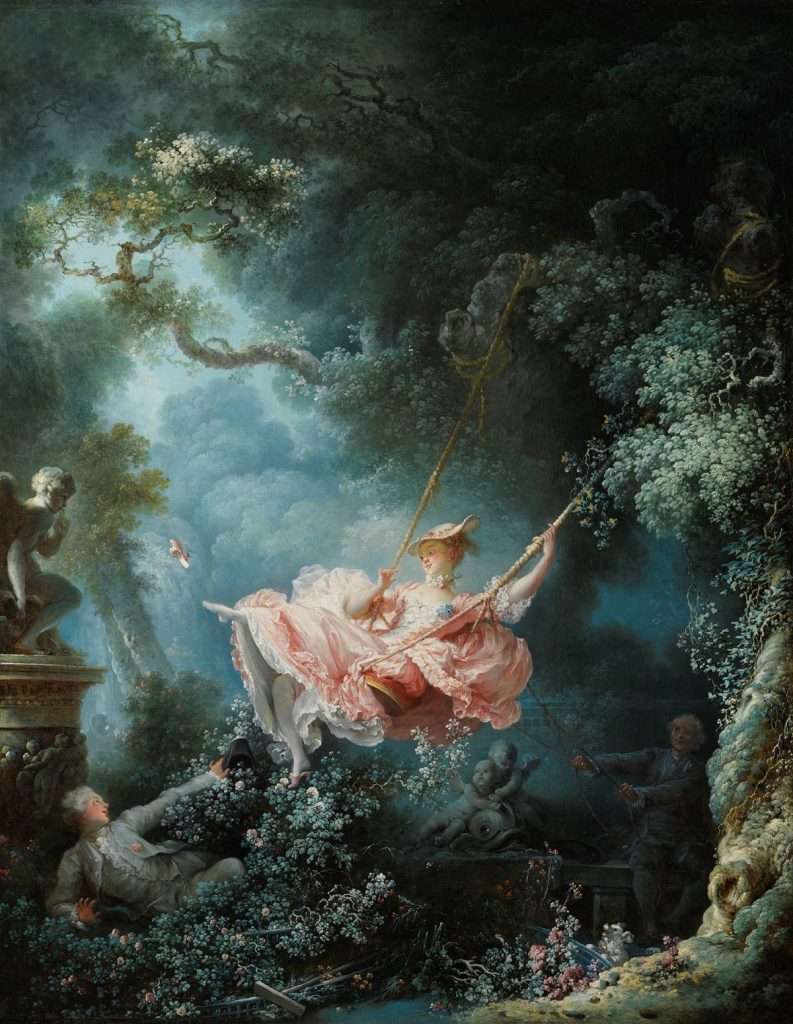
Jean-Honoré Fragonard, The Swing, 1767–1768, Wallace Collection, London, UK.
Fragonard (1732–1806) was a French painter from the Rococo period. His genre paintings of the French aristocracy perfectly embody the essence of Rococo art, which was to show wealthy people enjoying their luxurious lifestyle. Undoubtedly his most popular work: The Swing (1767–1768), is one of the best masterpieces of the Rococo era. It is a story of a love affair. A young lady sways on a swing, while a man hides in the bushes, pointing underneath her dress. In the background stands presumably her husband unaware of the scene right in front of him. Fragonard’s work and many other outstanding art pieces from the 15th to 19th century can be found in the Wallace Collection situated in Marylebone area of London.
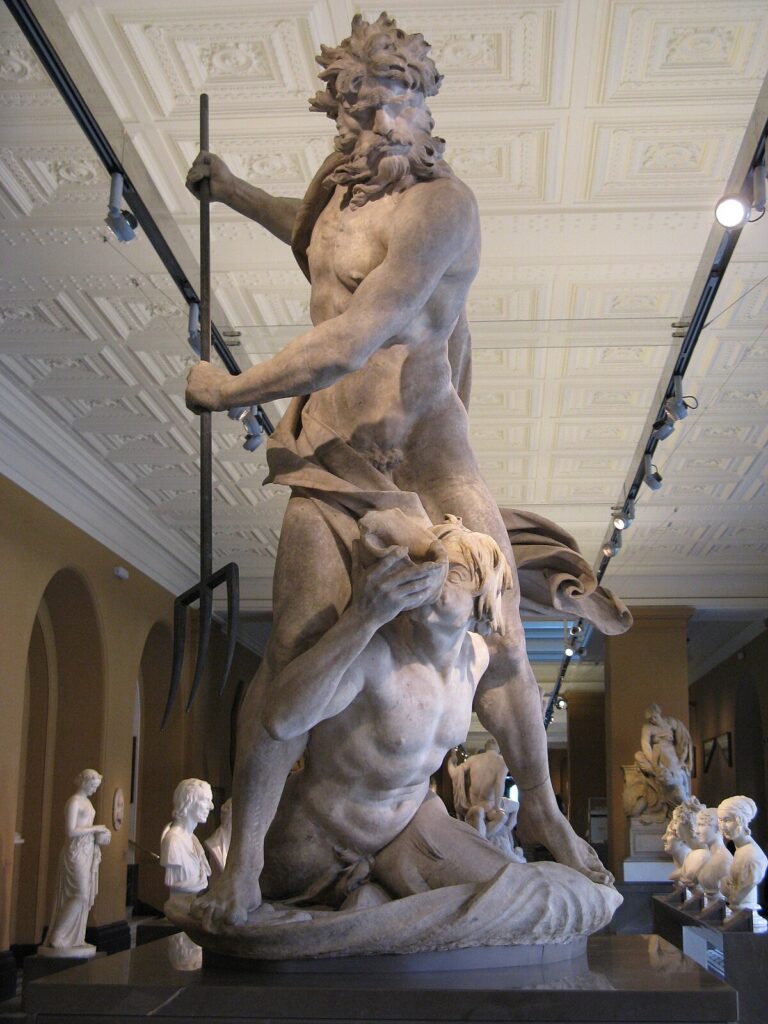
Gian Lorenzo Bernini, Neptune and Triton, 1622–1623, Victoria and Albert Museum, London, UK. Photograph by Yair Haklai via Wikimedia Commons (CC BY-SA 3.0).
The most prominent Baroque sculptor, without a doubt, was Gian Lorenzo Bernini (1598–1680). Skilled in various techniques, this Italian artist is best known for his dynamic group sculptures. To this day many admire Bernini’s ability to flawlessly imitate the delicate nature of fabrics using a heavy material like marble. Baroque sculptor’s main goal was to effortlessly capture movement and action. Neptune and Triton (1622–1623) depicts Neptune, the Roman god of the sea, and his son Triton in a dynamic composition characteristic to Baroque. It used to serve as a centerpiece of a fountain in the garden of the Villa Montalto in Rome. However, now this masterpiece belongs to the Victoria and Albert Museum in London.
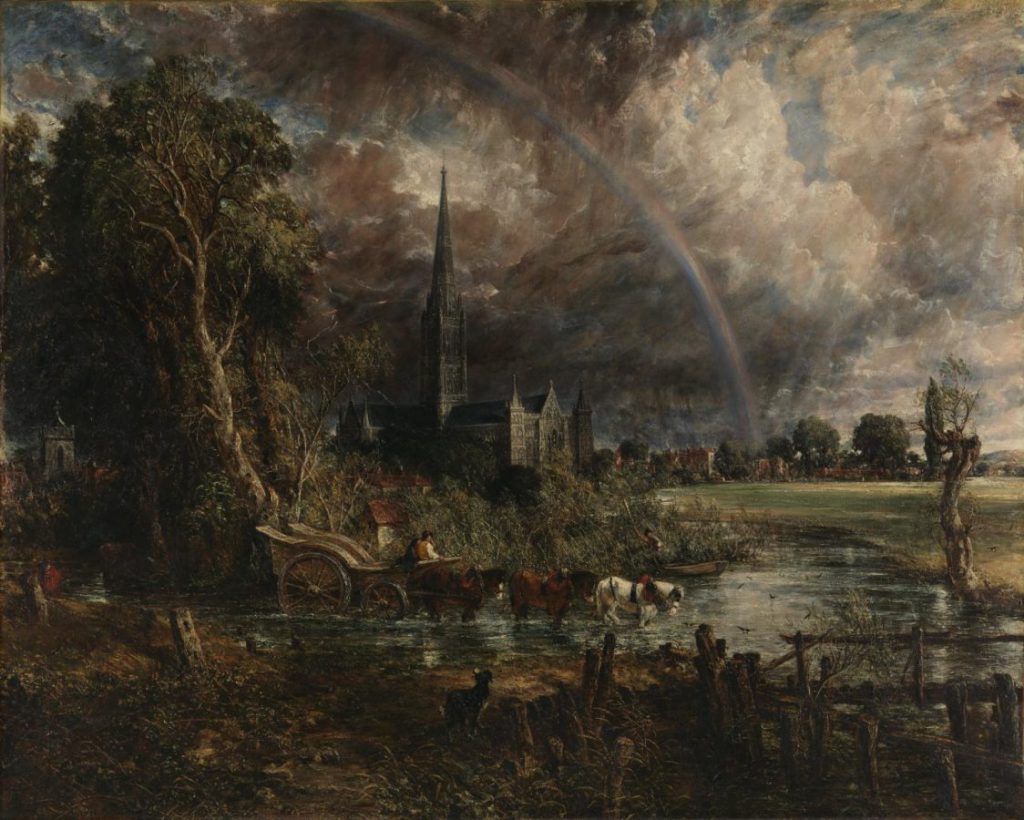
John Constable, Salisbury Cathedral from the Meadows, 1831, Tate Britain, London, UK.
London holds a grand collection of masterpieces from all around the world, but it certainly does not lack outstanding artworks of their own. John Constable (1776–1837) was a prominent landscape painter in England’s history. Born in Suffolk, he is best known for his Romantic paintings of the English countryside. He frequently visited Salisbury and painted its famous cathedral from multiple viewpoints. This particular view of the Salisbury Cathedral from the Meadows (1831) is one of Constable’s best works and can be found along his many more artworks in Tate Britain in London. While in England it might also be worth going on a day trip to Salisbury. There you can see the stunning cathedral yourself, and admire the beauty of Constable’s beloved countryside!
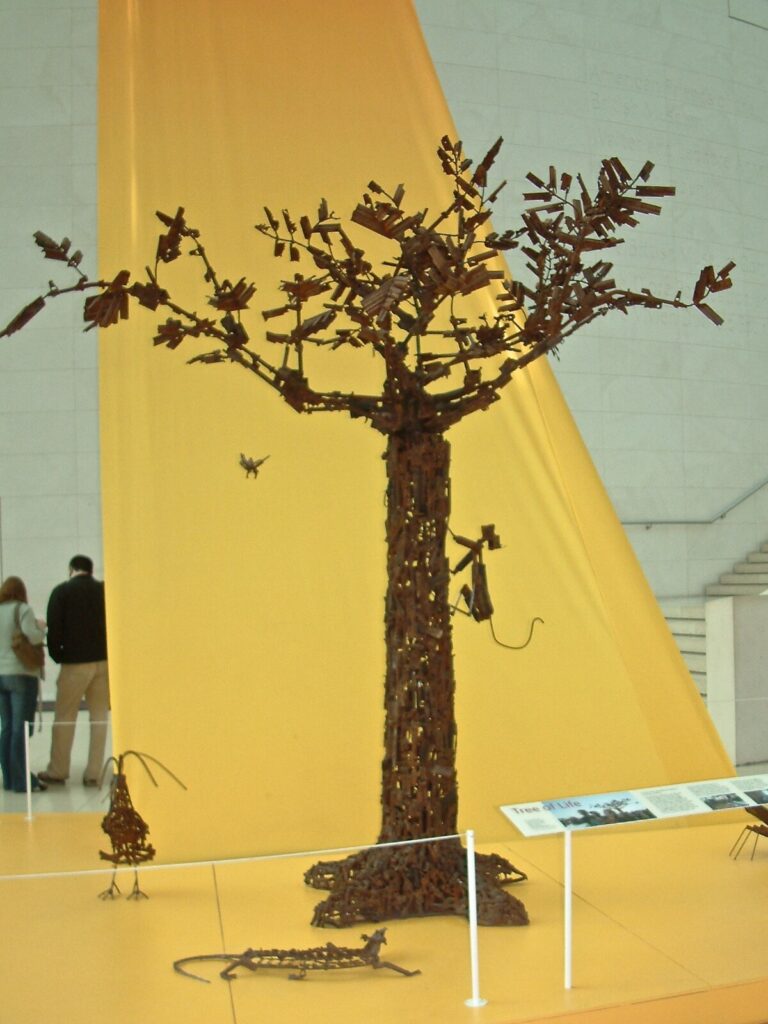
Cristóvão (Kester) Canhavato, Hilario Nhatugeuja, Adelino Mate, and Fiel dos Santos, The Tree of Life, 2004, British Museum, London, UK. Photograph by Paul Hudson via Wikimedia Commons (CC BY-SA 2.0).
A contemporary sculpture titled The Tree of Life (2004) is a collaboration of four artists from Mozambique: Cristóvão (Kester) Canhavato, Hilario Nhatugeuja, Adelino Mate, and Fiel dos Santos. It was commissioned by the British Museum as a war memorial. The sculpture consists of the tree itself and four animals all assembled with parts of used firearms. Kester and others used 600,000 weapons, surrounded by Mozambicans following the end of the Mozambican Civil War. The artists turned symbols of violence into a contemporary art piece meant to commemorate the courage of their people. This artwork is on display in the African department of the British Museum in the Bloomsbury area of London.
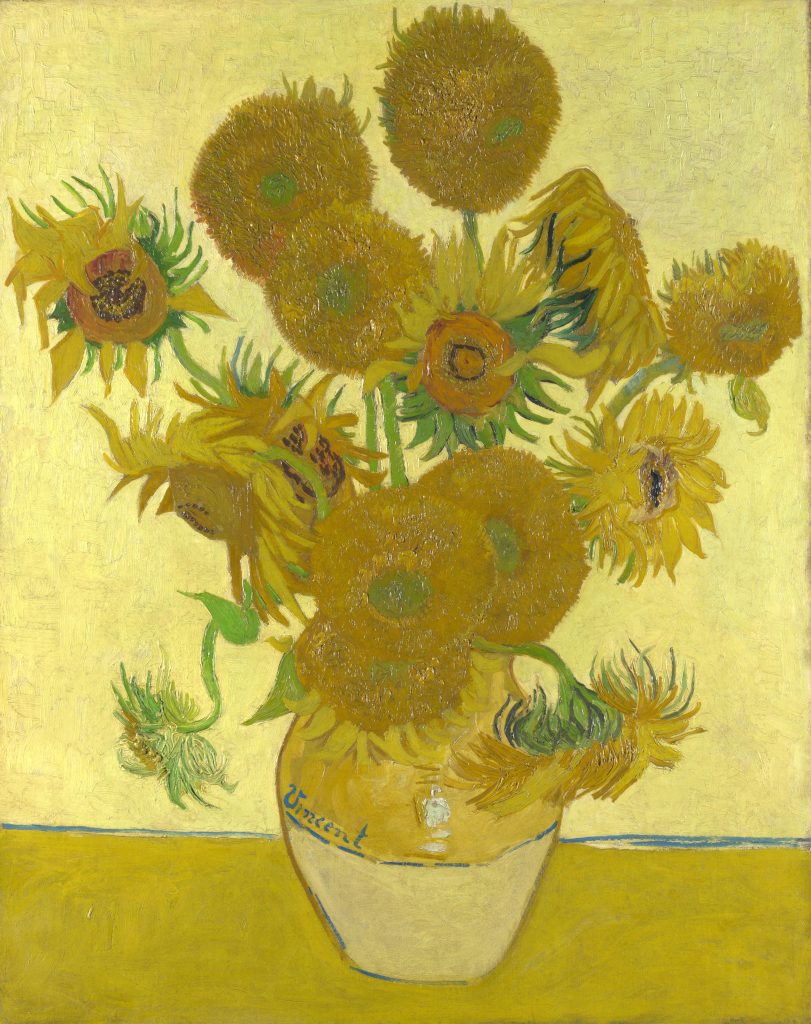
Vincent van Gogh, Sunflowers, 1888, National Gallery, London, UK.
If there is one artist that everyone can recognize, it certainly is Vincent van Gogh (1853–1890). Despite the lack of success during his life, he is now one of the greatest Post-Impressionist painters. Among his notable artworks are Sunflowers (1888), which Van Gogh painted to decorate his house in Arles. The painting uses a narrow spectrum of yellows and represents various stages of life. From van Gogh’s letters it is evident that this painting held a significant meaning to the artist. The sunflowers that belong to the National Gallery in London are the fourth version of sunflowers in a vase. If not due to their significance in Western art history, you also might have heard of them as the target of Just Stop Oil activists, who threw tomato soup at the artwork in 2022. Thankfully the piece was protected by a plexiglass and remains unharmed in the gallery.
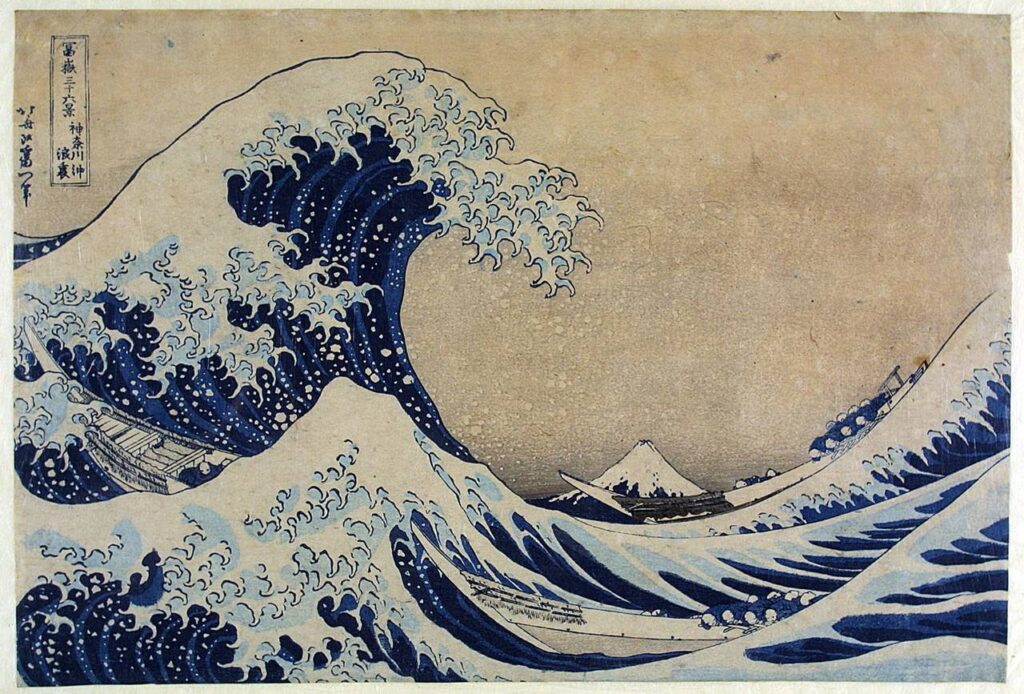
Katsushika Hokusai, Under the Wave off Kanagawa, 1831, Victoria and Albert Museum, London, UK.
Japanese ukiyo-e artist Katsushika Hokusai (1760–1849) created perhaps the most recognizable Japanese woodprint of all time. Under the Wave off Kanagawa (1831), commonly known as The Great Wave is a part of the Thirty-six Views of Mount Fuji series of landscape prints. Hokusai used the woodblock printing technique popular during the Edo period to create a depiction of Mount Fuji surrounded by a giant wave. His work influenced many artists, including Vincent van Gogh, whose Starry Night is said to be inspired by The Great Wave. Only about 100 copies survive to this day. One of them is a part of the Victoria and Albert Museum’s East Asia collection. The print is currently displayed at Young V&A as a part of Japan: Myths to Manga exhibition. Another copy also belongs to the British Museum; however, it is not currently on display there.
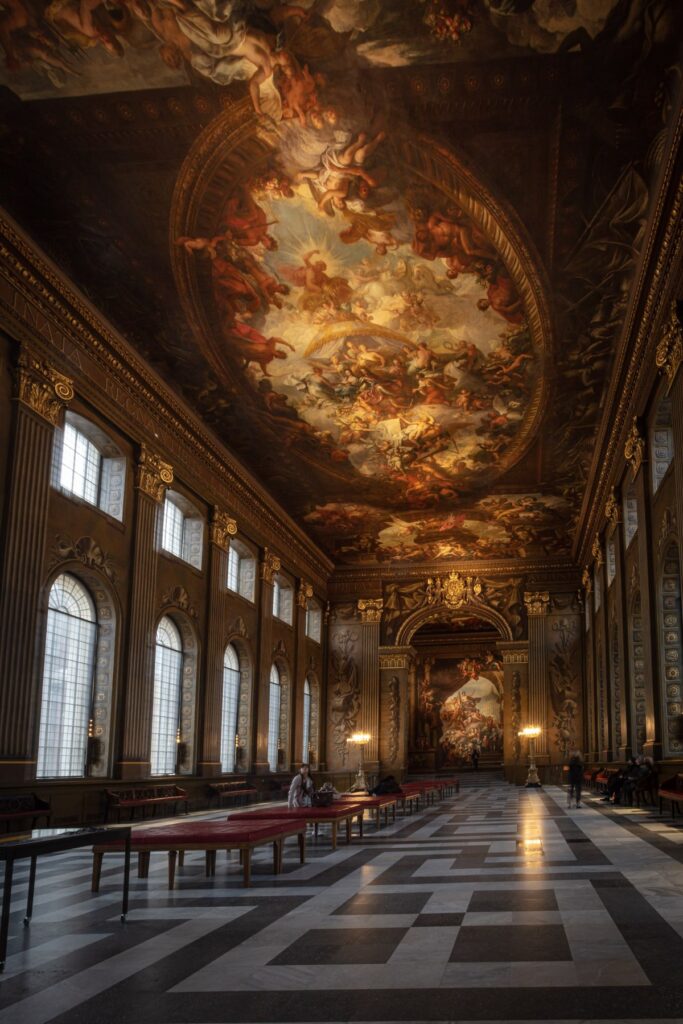
Sir James Tornhill, Painted Hall, 1707–1726, Old Royal Naval College, London, UK. Photograph by Shawn M. Kent via Wikimedia Commons (CC BY-SA 4.0).
The Painted Hall, also referred to as ‘Britain’s Sistine Chapel’ is a breathtaking masterpiece by 18th-century English painter Sir James Tornhill (1675–1734). It is an astonishing room at the Old Royal Naval College. The room is decorated with large-scale ceiling and wall paintings of 40,000 square feet. Formerly the hall functioned as a dining room for the Royal Hospital; however, now it is open to tourists as one of Britain’s greatest masterpieces. Similarly to Italian Baroque ceiling paintings it uses a technique called trompe l’oeil (deceive the eye). This technique uses light and shadow, as well as distorted proportion to trick the viewer’s perception of a flat painting. In other words, it is an illusion, which makes the painting appear three-dimensional. The Old Royal Naval College itself is one of the UNESCO World Heritage Sites. It is one of the best masterpieces you can see in London.
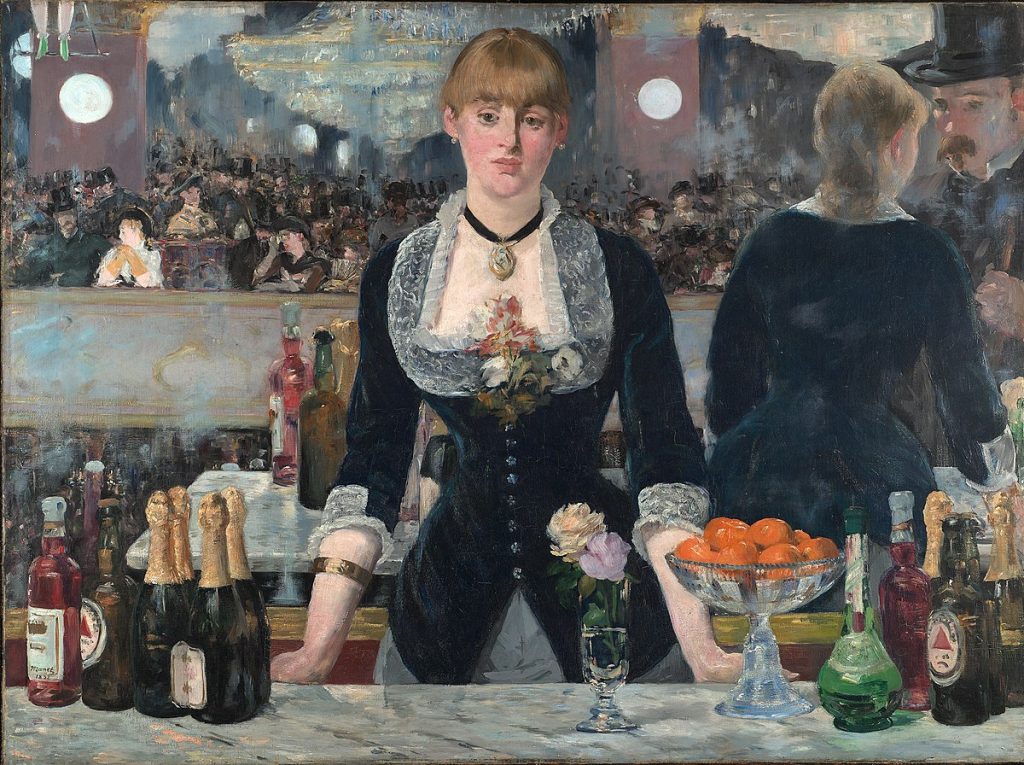
Édouard Manet, A Bar at the Folies-Bergère, 1882, The Courtauld Gallery, London, UK.
Often confused with another artist of that time; Édouard Manet (1832–1883) was an important figure in the 19th-century art scene. Although his early works possess characteristics of Realism, his later works lean more towards Impressionism. This means he created a smooth transition from Realism to Impressionism that inspired other young artists. A Bar at the Folies-Bergère (1882) is one of his last works, showcasing his favourite subject; the Parisian life. For this scene the artist used an interesting composition. He placed a woman working at a bar in the foreground, and a mirror reflecting the scene back at the viewer behind her. However, the reflection of the woman occurs to the right, as opposed to directly behind her. This seemingly irrelevant detail creates a lot of confusion and it is exactly what makes the piece so intriguing. Manet’s masterpiece and other Impressionist paintings hang in the Courtauld Gallery in London.
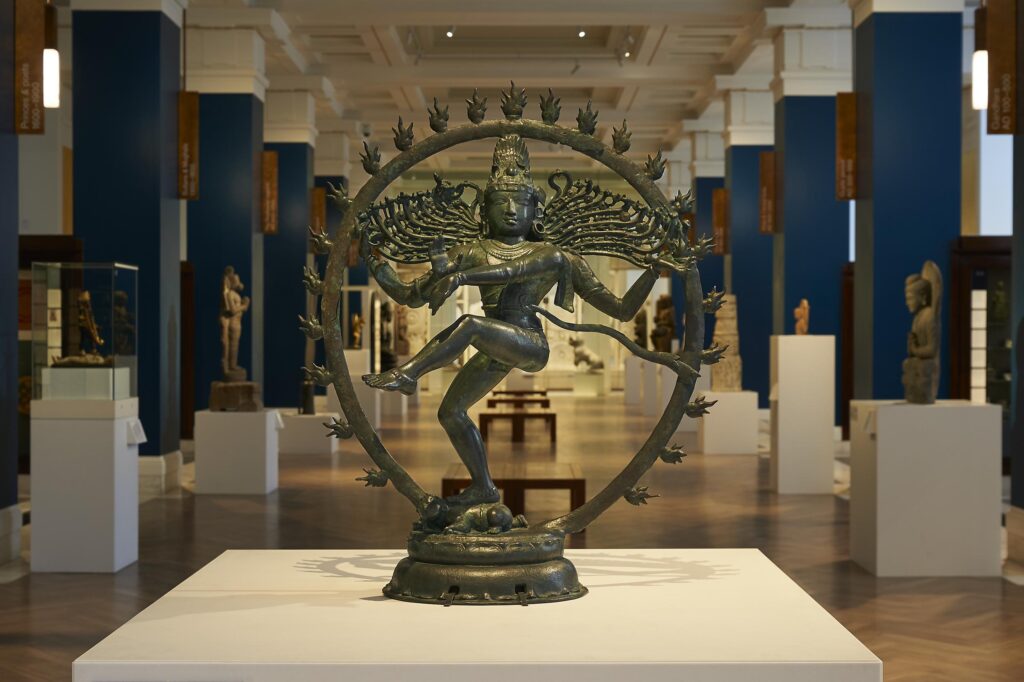
Śiva Natarāja, c. 800 CE, The British Museum, London, UK.
Nataraja is a bronze sculpture of the Hindu god Shiva as the cosmic dancer. It comes from the state of Tamil Nadu during the Chola dynasty over a thousand years ago. The statue holds a profound cultural significance as it symbolizes the eternal cycle of life. Shiva appears in a dynamic dance pose with multiple arms and hair that spreads out into thin strands. The Ring of Flames that symbolizes the cosmic fire surrounds the deity as it steps on a dwarf, which represents the human ignorance. Nataraja is considered to be the highest form of Shiva seen as the source of all movement within the universe. This important symbol of Indian culture stands in the British Museum along with a similar statue, which is one of the earliest known Nataraja sculptures from as far as 800 CE.
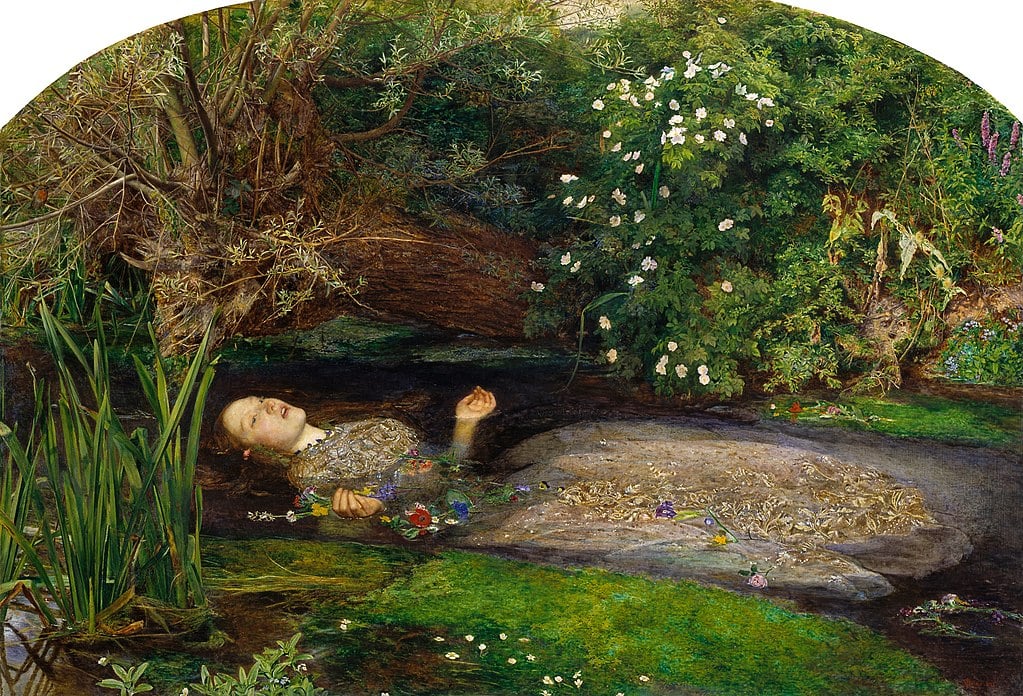
Sir John Everett Millais, Ophelia, 1851–1852, Tate Britain, London, UK.
Who hasn’t at least once complained about their school? Sir John Everett Millais (1829–1896) certainly has, so much so that in 1948 during a meeting with two other young artists at his parents’ house, he decided to form a group called Pre-Raphaelite Brotherhood. The group rejected the Royal Academy of Arts’ unimaginative mannerist style that followed the teachings of the famous Renaissance painter Raphael, hence the name. They were fascinated by 14th- and 15th-century Italian art and disliked the popular at the time genre painting. One of their claims was that art should depict only serious subjects, such as religion or themes from literature. Millais’ famous piece: Ophelia (1851–1852) depicts just that. It is a scene from Shakespeare’s Hamlet, and it closely follows the Pre-Raphaelite Brotherhood’s doctrine to attentively study nature. At first it received a mixed response, but now it is one of the most important works of that time. This masterpiece is located in London as a part of Tate Britain’s Pre-Raphaelite collection.
DailyArt Magazine needs your support. Every contribution, however big or small, is very valuable for our future. Thanks to it, we will be able to sustain and grow the Magazine. Thank you for your help!